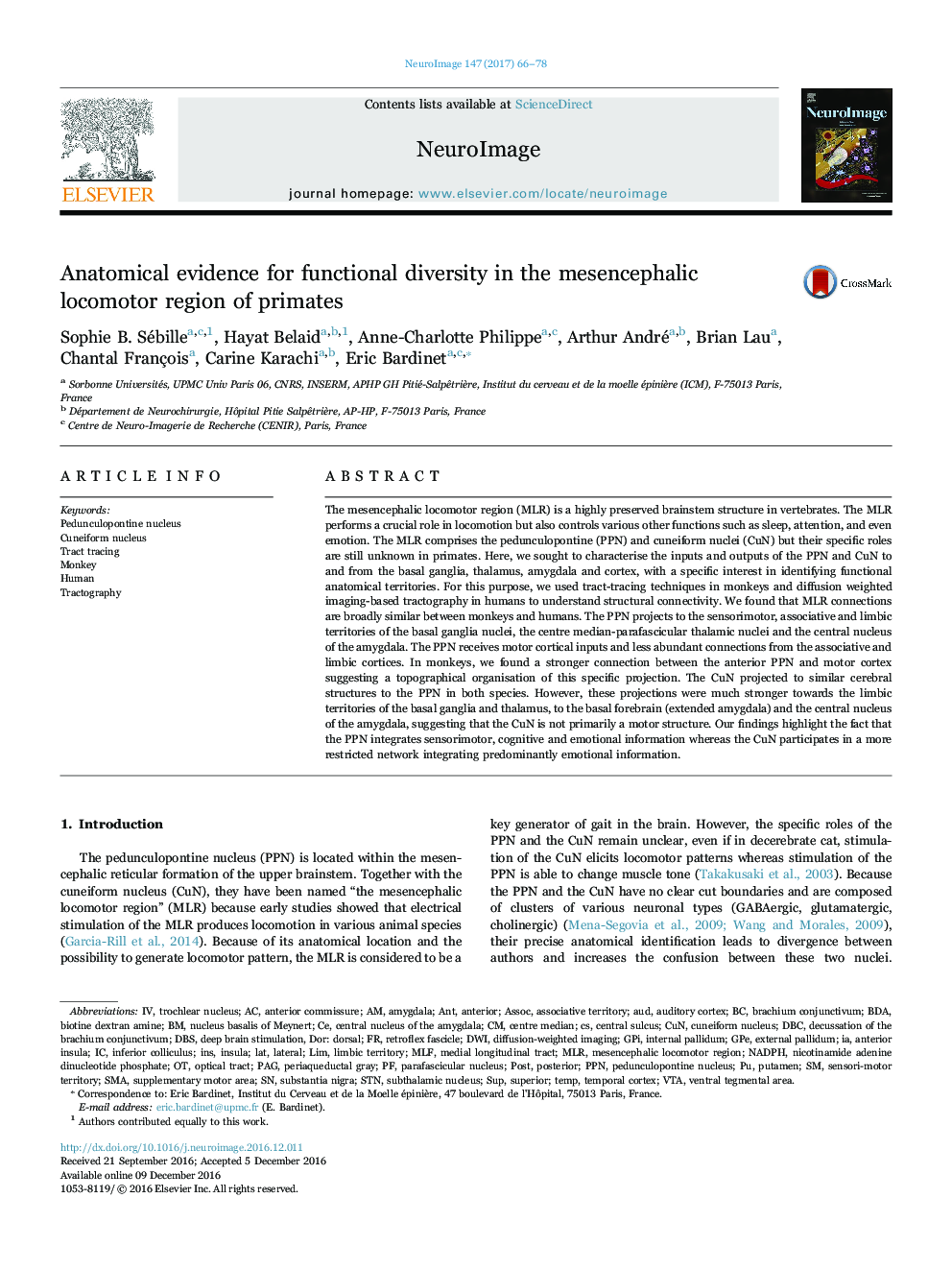| کد مقاله | کد نشریه | سال انتشار | مقاله انگلیسی | نسخه تمام متن |
|---|---|---|---|---|
| 5631484 | 1580863 | 2017 | 13 صفحه PDF | دانلود رایگان |
- Investigating MLR functional connectivity in primates.
- Tract tracing experiments in monkeys.
- Diffusion-weighted imaging based tractography in humans.
- The PPN integrates sensorimotor, cognitive and emotional information.
- The CuN integrates predominantly emotional information.
The mesencephalic locomotor region (MLR) is a highly preserved brainstem structure in vertebrates. The MLR performs a crucial role in locomotion but also controls various other functions such as sleep, attention, and even emotion. The MLR comprises the pedunculopontine (PPN) and cuneiform nuclei (CuN) but their specific roles are still unknown in primates. Here, we sought to characterise the inputs and outputs of the PPN and CuN to and from the basal ganglia, thalamus, amygdala and cortex, with a specific interest in identifying functional anatomical territories. For this purpose, we used tract-tracing techniques in monkeys and diffusion weighted imaging-based tractography in humans to understand structural connectivity. We found that MLR connections are broadly similar between monkeys and humans. The PPN projects to the sensorimotor, associative and limbic territories of the basal ganglia nuclei, the centre median-parafascicular thalamic nuclei and the central nucleus of the amygdala. The PPN receives motor cortical inputs and less abundant connections from the associative and limbic cortices. In monkeys, we found a stronger connection between the anterior PPN and motor cortex suggesting a topographical organisation of this specific projection. The CuN projected to similar cerebral structures to the PPN in both species. However, these projections were much stronger towards the limbic territories of the basal ganglia and thalamus, to the basal forebrain (extended amygdala) and the central nucleus of the amygdala, suggesting that the CuN is not primarily a motor structure. Our findings highlight the fact that the PPN integrates sensorimotor, cognitive and emotional information whereas the CuN participates in a more restricted network integrating predominantly emotional information.
Journal: NeuroImage - Volume 147, 15 February 2017, Pages 66-78
